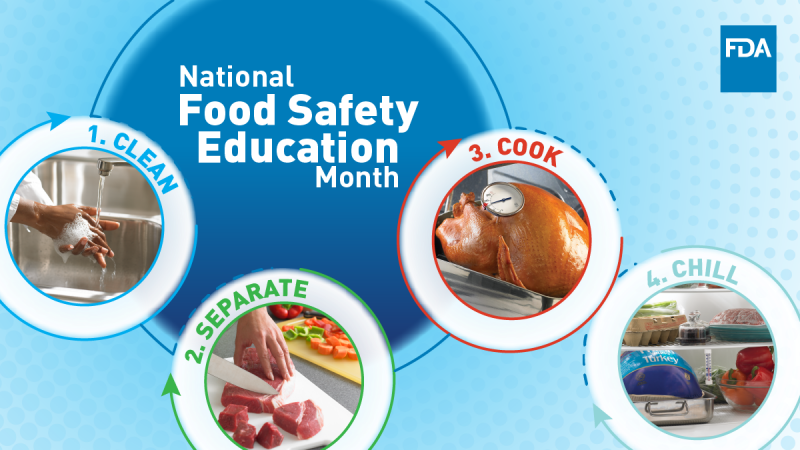National Food Safety Education Month 2023 — People at Higher Risk
Constituent Update
September 1, 2023
Each September for 25 years, in recognition of National Food Safety Education Month, health educators and consumers have focused on the most effective ways to avoid foodborne illness, often called food poisoning. According to the Centers for Disease Control and Prevention, 48 million persons — or 1 of every 6 people get foodborne infections each year. Of those, 128,000 are hospitalized, and 3,000 die from their foodborne illness.
Foodborne illness is unpleasant and potentially dangerous for everyone, but you can avoid getting sick by following simple steps – Clean, Separate, Cook, Chill, and if at a higher risk, then possibly avoiding certain foods. FDA has many resources (listed below) that can help you stay healthy and safe.
This year we want to bring special attention to people who are at higher risk and help them, their family members, and caregivers by highlighting food safety information to avoid foodborne illness. High-risk people include children under 5 (as their immune systems are not fully developed) and those with immune systems weakened by pregnancy, aging, certain chronic diseases or autoimmune disorders, and immunosuppressive treatments.
Safe Food Handling
Follow four simple steps to help keep your family safer food poisoning:
- Clean: Wash your hands before and after handling food and wash your cutting boards, countertops, dishes, and utensils with hot soapy water. Rinse fresh fruits and vegetables under running tap water.
- Separate: Separate raw meat, poultry, seafood, and eggs from other foods in your grocery cart. Use separate cutting boards for fresh produce and raw meat, poultry, seafood.
- Cook: Use a food thermometer to ensure that raw meat, poultry, seafood, and egg products are cooked to a safe minimum internal temperature to destroy any harmful bacteria.
- Chill: Refrigerate or freeze meat, poultry, eggs, seafood, and other perishables within 2 hours of cooking or purchasing. Refrigerate within 1 hour if the temperature outside is above 90° F. Never thaw food at room temperature, such as on the countertop.

